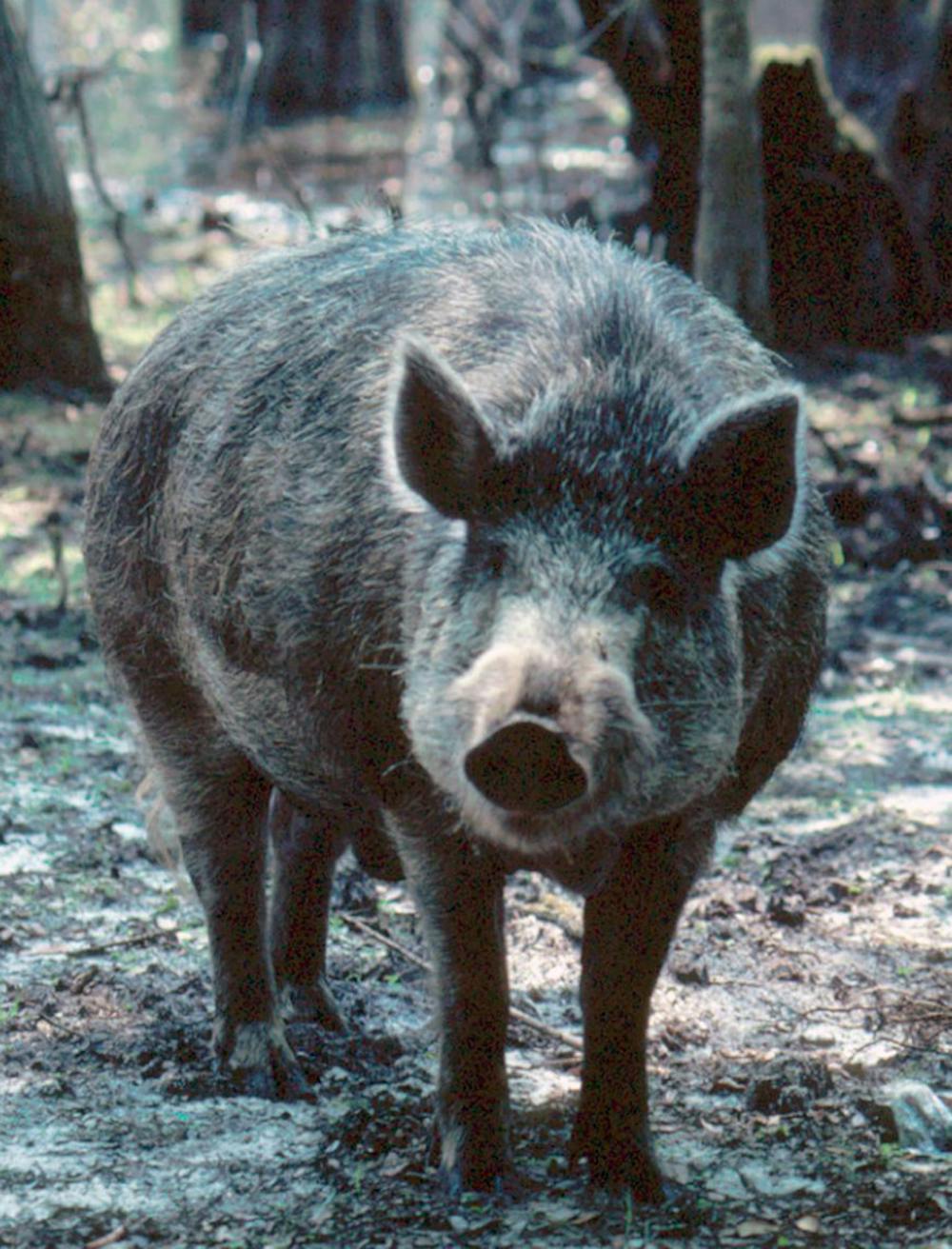A peculiar critter control problem plagues Anthony Rue and his neighbors: Drawn in by the allure of acorns, vicious wild hogs regularly invade his yard.
Rue, owner of Volta Coffee, Tea & Chocolate, lives north of Paynes Prairie Preserve State Park near La Chua trail.
Nearby, Casey Whitford and his wife Sarah Cervone, owners of paleo business Wild Man Foods, have been trying to help residents of the area control the hog population for three years.
“(The hogs) are an extreme nuisance,” Whitford said.
Wild hogs not only destroy private property but also are a danger to the environment because they eat essential native plants, Whitford said.
There are more than half a million feral hogs in Florida, according to the Florida Department of Agriculture and Consumer Services website.
The hogs populate every Florida county, said Karen Parker, the regional public information coordinator for the Florida Fish and Wildlife Conservation Committee. When residents call the FWC, they are referred to a nuisance wildlife trapper in their area, who usually charges a fee to remove them.
“We don’t have a critter-getter service through us,” Parker said, adding that although the FWC gets a lot of phone calls about the hogs, its budget and lack of equipment prevents further intervention.
The Wild Man Foods duo works with trappers, a butcher and the occasional dog to capture the hogs and get the meat ready to sell at the Union Street Farmers Market downtown. The pair traps them for free.
An entire yard can be demolished in one hour. But from trapping the animal to getting the meat in the cooler, taking down a hog requires an average of six hours, Whitford said.
Wild hog traps are 6 feet by 10 feet, big enough to restrain a 300- to 400-pound beast with razor-sharp teeth. Experienced trappers rely on the direction of the wind and the presence of acorns, a hog delicacy, to catch the feral swine.
“They’re like full-on Marlboro men,” Cervone said.
Acorns are the root of Rue’s problem. After placing a wildlife camera in his yard, Rue witnessed one male hog, about three females and 15 piglets violently foraging for nuts and leaving deep holes in their wake. Rue estimates the ditches in his yard are about 10 yards by 30 yards.
Before Whitford and Cervone could get to the hogs, the acorns were gone, and the hogs with them.
Rue said though hunters may be the only way to stop the invasion, they may be partially responsible for the animals migrating closer to city limits.
“It draws them into urban areas where they shouldn’t be,” Rue said.
The hogs are becoming an increased threat to private property owners, too.
“It looks like a bomb hit when they come through,” Whitford said.
[A version of this story ran on page 1 on 2/11/2014 under the headline "Wild hogs going HAM in yards, parks near Paynes Prairie"]
A Florida Fish and Wildlife photo shows a feral hog, one of more than half a million in the state of Florida.






